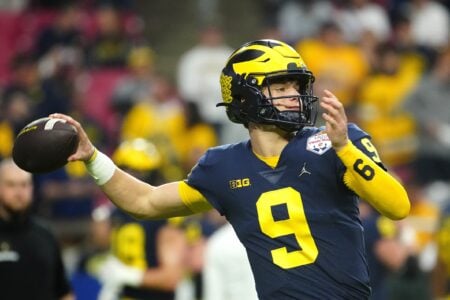- Joined
- Feb 8, 2005
- Messages
- 43,530
- Reaction score
- 24,122
Got the new ESPN The Magazine and they had 2 guys do up a "new draft chart". Some of their facts are sound, but there is one key factor that it doesn't take into consideration. It totally ignores the differences in the length of a contract that players can sign.
While I think that they are somewhat right in their thinking that there is less of a value difference between picks 1 and 16, and 17-32, I believe that they are wrong in that its only a meer 890 points. Its not the 2400 points of the first draft value chart, but its certainly not 890 points. Its probably closer to a 1800 point drop, in my honest opinion.
Here is how I see it working out:
http://www.geocities.com/nh_wynter/DraftValueChart.htm
This is just something I threw together in an excel worksheet. But I feel it takes into consideration the differences in the contract lengths.
But, like anything, its a guideline and not set in stone.
On other thing that I find hilarious about the article is that they totally blame Jimmy Johnson and "his flawed chart" for the wows of teams like the 49ers, Lions and Raiders.
P.S. If someone can tell me how to embed the spreadsheet into the message, I'd appreciate it.
While I think that they are somewhat right in their thinking that there is less of a value difference between picks 1 and 16, and 17-32, I believe that they are wrong in that its only a meer 890 points. Its not the 2400 points of the first draft value chart, but its certainly not 890 points. Its probably closer to a 1800 point drop, in my honest opinion.
Here is how I see it working out:
http://www.geocities.com/nh_wynter/DraftValueChart.htm
This is just something I threw together in an excel worksheet. But I feel it takes into consideration the differences in the contract lengths.
But, like anything, its a guideline and not set in stone.
On other thing that I find hilarious about the article is that they totally blame Jimmy Johnson and "his flawed chart" for the wows of teams like the 49ers, Lions and Raiders.
P.S. If someone can tell me how to embed the spreadsheet into the message, I'd appreciate it.
Last edited:


















